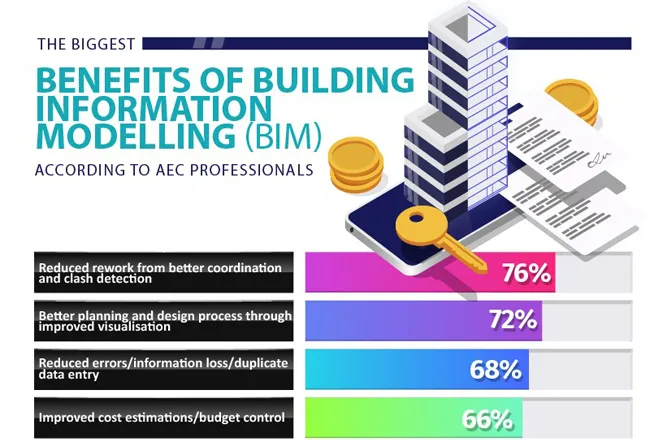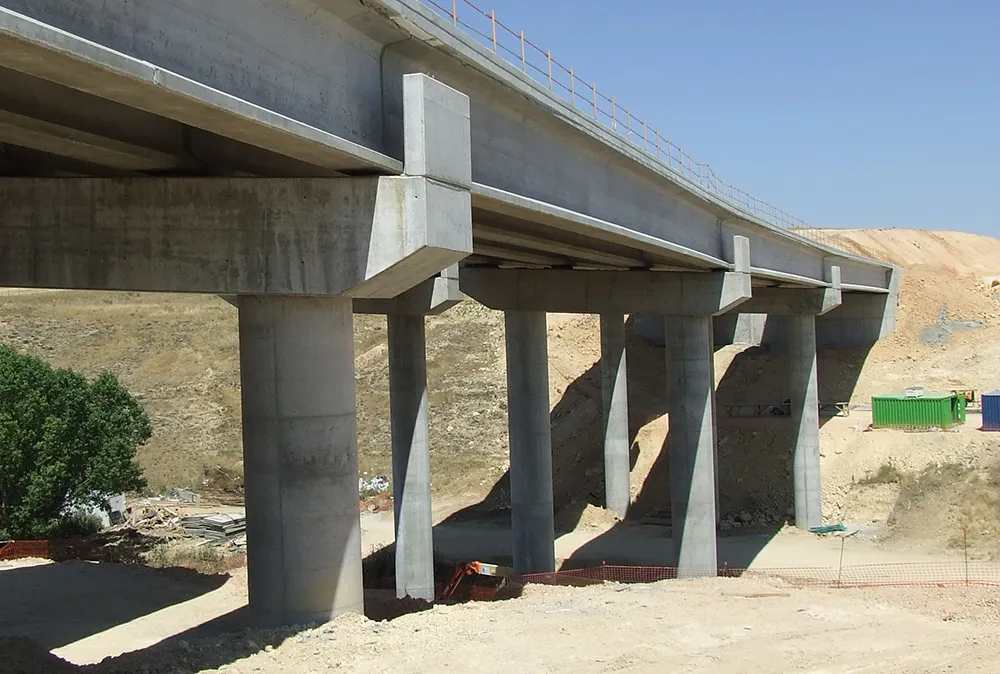
The technology essentially facilitates architecture, engineering and construction (AEC) professionals to create and use an intelligent 3D model to gain valuable insight into how a building project can be better planned, designed and managed.
Interested in ground-breaking ‘PropTech’, housing agents Sellhousefast.uk surveyed 602 architects, engineers and construction professionals to identify what they think are the biggest benefits of using building information modelling (BIM).
Sellhousefast found that professionals view reduced rework through better coordination and clash detection (76%) as the biggest advantage of harnessing BIM. From BIM - internal and external stakeholders can access a shared model to see where possible clashes may occur (e.g. pipework running through steel beam etc.) and then, coordinate between them to rectify the issue before construction even begins.
Thereafter, 72% feel the enhanced visualisation from BIM enables them to positively elevate the planning and design process. Understandably so, as the 3D modelling element of BIM can provide a detailed real-world imaging of entire floor plans prior to starting building work.
In third position, 68% of the experts believe BIM decreases errors/information loss/duplicate data entry. Whilst, 66% think the tech has a good impact financially, as it improves cost estimations and budget control.
Since BIM allows for documentation to be easily changed by all parties involved in a project to account for any new information/changes (e.g. site conditions etc.) – scheduling/sequencing activities can therefore be communicated and planned more accurately. In doing so, lead to shorter project cycles according to 54% of professionals.
Interestingly, 47% appreciate the capabilities of BIM to recognise hazards in the pre-construction phase, thus when the time comes - minimising the occurrence of health and safety risks on the actual building site itself.
• Professionals view reduced rework through improved coordination and clash detection (76%) as the biggest advantage of harnessing building information modelling (BIM)
• Thereafter, 72% feel the enhanced visualisation from BIM enables them to positively elevate the planning and design process
• 47% appreciate the capabilities of BIM to recognise hazards in the pre-construction phase – thus, minimising health and safety risks
• Experts place insufficient BIM training/knowledge (68%) and lack of in-house BIM expertise (63%) as the primary barriers preventing the wider use of the technology
• Interestingly, 56% think the cost of BIM is a major obstacle stopping more organisations from implementing the technology in their operations/working practises
Additionally, Sellhousefast.uk asked the 602 professionals surveyed what they thought were the main barriers preventing the wider use of building information modelling (BIM).
From this, Sellhousefast discovered that professionals place workers having a lack of BIM training/knowledge (68%) as the primary reason as to why the technology is not being used far more than it currently is.
Subsequently, 63% attribute the little use or absence of BIM in certain organisations because they don’t have enough in-house expertise to provide adequate assistance and guidance on the functionality of BIM.
Contrastingly, just 39% blame the unprogressive culture of some companies as the principle factor stopping them from adopting cutting-edge technology such as BIM. Fascinatingly, 47% feel the projects many organisations/professionals take-on and handle are too small for them to justify the inclusion of BIM in their working practises/operations.
Robby Du Toit, the Managing Director of Sellhousefast.uk commented:
“Building information modelling is rapidly becoming more and more prominent. The technology is letting organisations construct buildings virtually before they are physically completed. As a result, BIM unlocks the opportunity to seek out more efficient approaches towards the planning, designing and construction phase of different projects. This research certainly shows that BIM has left an encouraging impression on professionals who have used the technology. The benefits highlighted by them, demonstrates the huge potential BIM has and as understanding of the technology improves, it will continue to revolutionise the property industry”.
Credit: %$Linker:









